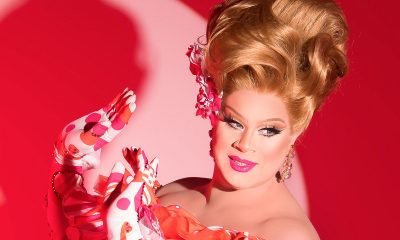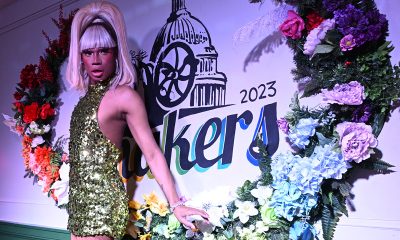Arts & Entertainment
‘I was born to create and entertain’
DJ Nina Flowers was ‘RuPaul’s Drag Race’ premiere season runner-up
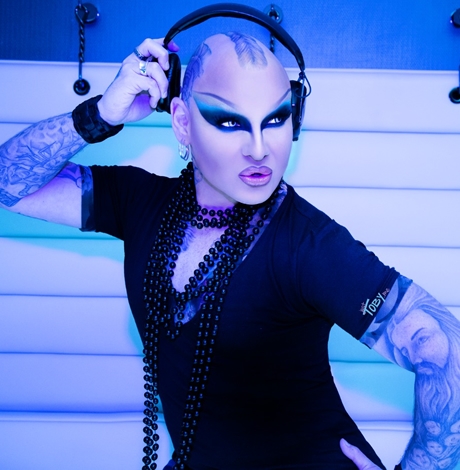
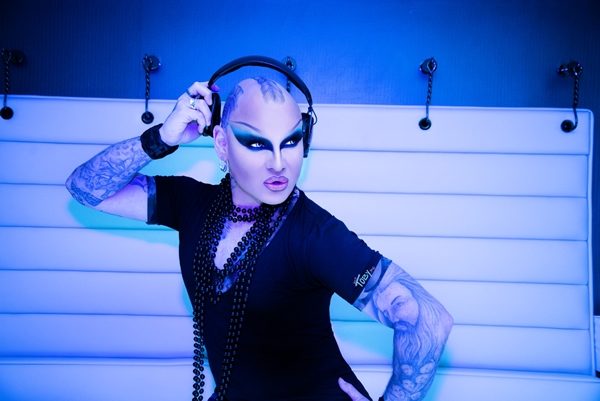
Bombastic flowers of extravagant colors and shapes hang from the nightclub’s roof. The half-lit dance floor at times simulates a jungle with exotic plants and butterflies. Some flowers that are placed on the stage symbolize the birth of music, which Nina Flowers generates from her turntables.
Flowers knows exactly what sounds to combine so that the audience goes into ecstasy, a sensation that bounces back instantly and makes you raise your arms to the metallic beat that is more intense with every second. When the music reaches its climax, the lights explode like lightning and Flowers emerges with one hand on her headphones and the other directing the electrifying atmosphere at will at The Manor, one of the most popular nightclubs in Wilton Manors, a gay Mecca in South Florida.
Flowers — a DJ, music producer, former drag queen and makeup artist — is the guest star on this Saturday. Many in the audience pull out their cell phones to film her while they continue to dance, and more than a few of them come to ask for a picture or autograph.
Flowers is widely recognized among the LGBTQ community, especially for her appearances on “RuPaul’s Drag Race.” Flowers finished second in the show’s season premiere in 2009.
A lot has happened in Flowers’ professional and personal life since then. She agreed to an exclusive interview with the Washington Blade via email.
WASHINGTON BLADE: Many have followed your career since you became a celebrity, but how did it all start? What prompted you to pursue a career as a DJ in the first place?
NINA FLOWERS: When I was very young, still a child, I used to accompany my father who helped a friend who was DJing at private parties. From the first time I went to one of these events, it was like love at first sight.
BLADE: What was your training as a DJ?
FLOWERS: I started playing neighborhood parties; family parties; at school, until I built a reputation and then continued to hold private parties and corporate events. At the age of 16 (in 1989) I auditioned for the first time for a position of resident DJ of a new club in San Juan, Puerto Rico, where I am from, and it was there where I obtained my first residency in a club. From there I continued working in many clubs on the island, until I had to move to the United States. And my career exploded.
BLADE: Is it true that back then you performed with a masculine appearance in the beginning?
FLOWERS: Correct and under the name of Jorge Flores, which is my birth name, then under the nickname of DJ Flowers that one of my previous bosses baptized.
BLADE: Precisely from where where does your stage name come?
FLOWERS: Nina is in tribute to my favorite artist, Nina Hagen, better known as the mother of punk rock. Flowers comes from my last name, Flores, in English. As I was already known as DJ Flowers, I decided to keep the relationship between both characters and the brand.
BLADE: How is the process to produce your music?
FLOWERS: It is an extremely fun and creative process. The first thing is that you have to be in those days where the “creative juices” are flowing. There are times that nothing works out, no matter how hard you try. Other days, pure wonders come out. The main thing is to have the knowledge of production and in turn of the program that is used to produce it. Basically (you need to) have a good set of tools, as well as a good team. The magic will be infinite once you have that and the desire to create.
BLADE: How would you define your sound?
FLOWERS: Progressive, sticky, tasty, tribal, different. Quite the opposite of what is commercial or what we hear everywhere.
BLADE: What do you feel behind the booth and surrounded by the public at that moment?
FLOWERS: Excitement, energy! I feel blessed to have the joy of being able to develop what I do with love and at the same time receive the support of those who follow me.
Flowers released her first single “Loca” in December 2009 in collaboration with DJ Ranny. The song reached its highest position (#15) on the Billboard Hot Dance Club Play chart the week of Jan. 30, 2010. She released her first mini-album entitled “Start Your Engines,” a compilation of six original tracks that he made with producer and remixer William Umana, in July of that same year.
Flowers in January 2011 released her dance single “I’m Feelin Flowers” and in July 2012 she released her single “Rock the Beat.”
BLADE: How was your transition from DJ to drag queen?
FLOWERS: Very soft and divine. When I started in the drag scene I was already working as a DJ in clubs, so I already had many friends and followers who supported me at all times. I started in the drag scene in 1993.
BLADE: If you had to define your style of drag, what would it be?
FLOWERS: Authentic, imposing, different, intense, colorful, energetic, androgynous and fun.
BLADE: How do you do it?
FLOWERS: A creation that combines my roots of who I am as a person, of what I like and attracts me, of my feelings and my artistic side.
BLADE: You competed on the first season of “RuPaul’s Drag Race.” How would you describe that experience?
FLOWERS: Incredible. Definitely an opportunity that I will never forget, and that surely opened the doors for me to be discovered throughout the world. It was a blessing for me.
BLADE: How did you feel when you finished in second place?
FLOWERS: No particular feeling. I was sad, of course, because obviously we all want to win. But if it didn’t affect me, it was because it wasn’t meant for me. I was very proud of my role in the show, and I know that I performed in the best possible way. At the same time BeBe Zahara Benet (the winner) and I became super good friends during the filming, and in the end I was very happy for her. She did an incredible job and worked as hard as I did, so to me she deserved it as much as I did.
BLADE: You did, however, win the Miss Congeniality award during the first season’s reunion special, making you the first runner-up to win the title and the best Miss. Could we call it your revenge?
FLOWERS: I think so (laughs).
BLADE: You were on RuPaul’s show in 2009, 2010 and 2012. What did you learn and how many opportunities has this television show brought to your career?
FLOWERS: Based on what I learned, the important thing is to be sure of yourself and to lose your fear of those things that we sometimes tell ourselves that we cannot do or achieve; to be positive at all times; and face any challenge that comes our way.
In terms of opportunities, it gave me global exposure, opening doors that I never dreamed would be there for me.
BLADE: I understand there is a Nina Flowers Day. Can you explain how it happened? What happens on your day?
FLOWERS: (Then-Denver Mayor) John Hickenlooper in 2009 gave me the honor of naming May 29 as Nina Flowers Day. This was in gratitude from the community and the city for the impact that I had brought to Denver after participating in the program and being one of its residents. They were all very proud of me. The reality is that I have never stopped touring the nation and internationally since the show happened, so I never had the opportunity to organize any event to commemorate the day.
BLADE: Why did you decide to abandon your career as a drag queen, even though you were so renowned in that world?
FLOWERS: Very simple. When I decided to stop it was simply because I needed new challenges in my life. I needed a change. I already knew it was time to conquer other territories. In my case the territory of music, which has always been my priority and my number one passion.
BLADE: You remain in drag, however, when you perform as a DJ. Why?
FLOWERS: It’s part of the Nina Flowers brand. A brand that took many years of preparation, sacrifice and is recognized worldwide. Why am I leaving her behind?
BLADE: DJ, drag queen, makeup artist … Which of your facets fulfill you the most as an artist?
FLOWERS: The entertainment. I was born to create and entertain. In the three facets I have the opportunity to develop myself in what I love so much, but my passion is music.
BLADE: How has the current pandemic affected you, taking into account that the entertainment industry has been one of the most affected areas?
FLOWERS: It has unfortunately affected me a lot financially, because almost all events in 2020 were cancelled. There were some cities that managed to have events. I worked on some of them, which caused a lot of personal attacks by COVID Karens, who only dedicate themselves to personal attacks on social media. This affected me emotionally, but it didn’t stop me either. All of us who have agreed to work during the pandemic have our reasons, our obligations, our needs. No one has the right to point out or judge anyone for their decisions, much less without knowing the reasons for being. For my part I continue and will continue forward. Nobody stops me. Nightlife will be the last to recover. Hopefully we will all recover from this global hit very soon.
In an effort to continue creating and not lose connection with her fans, Flowers has presented her most recent musical chapter “Resurgimiento” through the Twitch and Zoom platforms.
BLADE: What are you working on right now?
FLOWERS: On music. This is my life, my reason for being. It’s all I do
BLADE: Tell us a bit about Nina Flowers offstage. What are you like at home?
FLOWERS: Completely different. A little introverted, quiet, reserved, homey. I love cooking. I really like sewing and photography. Happily married for almost 14 years. I love animals and I am very family oriented.
BLADE: Is your personal life as successful as your professional one?
FLOWERS: Yes, thank goodness!
BLADE: What are those goals or dreams that you still haven’t achieved?
FLOWERS: I’ve already conquered the music circuit of the gay community. I would love and dream of a transition to the “straight community.” Someday it will be! I am already recognized as a DJ, so my goal for the moment is to achieve the same level of recognition or more as a music producer. Today that is my focus.
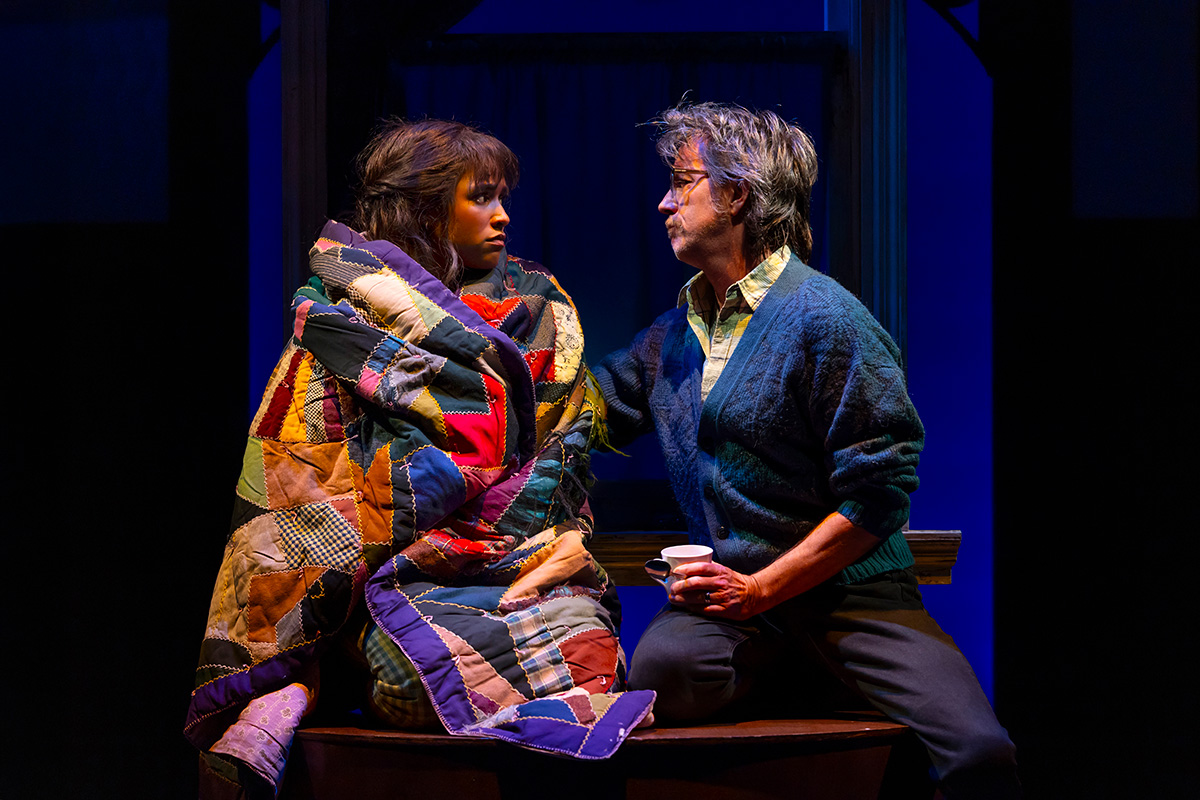
‘A Wrinkle in Time’
Through July 20
Arena Stage
1101 Sixth St., S.W.
Tickets range from $59-$209
Arenastage.org
Currently at Arena Stage, talented out actor and singer Taylor Iman Jones is rekindling an old friendship with an adored character of fiction.
Broadway vet Jones is starring as 13-year-old Meg Murry in “A Wrinkle in Time,” the world-premiere musical adaptation of Madeleine L’Engle’s same-titled book.
For many readers, especially women, the classic 1962 young adult novel, was their first foray into sci-fi, particularly one with a female protagonist.
The story centers on Meg, an awkward schoolgirl whose physicist father has mysteriously disappeared. Now, Meg, her popular friend Calvin, and smart younger brother Charles Wallace are tasked with moving through time and space to find him. Along the way they encounter adventure and evil.
For Jones, 33, playing 13-year-old Meg feels freeing in ways. She says, “As you get older, you’re told to grow up, so I like letting go of some of that. To feel feelings in their rawest form and to tap back into that is fun. I like the spontaneity. There are highs and lows to revisit.”
Born and raised in the San Francisco Bay Area, Jones began piano lessons at just six and soon added band and plays to their pursuits. Following high school, she made a deep dive into California theater for seven years before making the big move to New York in 2017 where after just two months she was singing on Broadway.
The determined and appealing Jones, who lives in New York with their partner, boasts an impressive bio. She has appeared on Broadway as Catherine Parr, Henry VIII’s sixth and final wife in Six, and in the original casts of “Head Over Heels” and “Groundhog Day.” She’s been seen in national tours of “Hamilton” and “American Idiot.”
WASHINGTON BLADE: It seems “A Wrinkle in Time” and Meg mean a lot to a lot of people.
TAYLOR IMAN JONES: The book tells the story of a girl with so much undiscovered power who’s accomplishing things she never imagined that she could.
BLADE: Can you relate?
JONES: Meg wears her emotions on her sleeve. I can certainly relate to that. I’m a Pisces. Sometimes being hyperemotional and very empathetic can feel like a burden, but as I’ve matured, I have realized that it’s not a bad quality. And it’s something I’ve learned to harness and to enjoy. I love that I can play a role like Meg in front of thousands of people.
BLADE: Was “Wrinkle in Time” a book you knew well?
JONES: Oh yeah, it’s a favorite book that lives in my heart and my mind. It’s one of the first books that taught me about the adventure of reading.
BLADE: And playing a favorite character must be a kick.
JONES: It really is.
BLADE: Meg is a big part in a big show.
JONES: This musical is huge. They’re traveling through space and meeting people on different planets. 20-person cast. 30 songs in the show. Quite the undertaking and I’m proud of us. I’m on stage for the entire musical and I sing four or five numbers.
As a mezzo soprano I guess you’d say I have the luxury of being able to do a lot of musicals that span a lot of different genres: rock musical, pop musical, and standards. “A Wrinkle in Time” is contemporary musical theater.
For me, singing is probably the least difficult part of the show. What’s harder for me is the way Meg experiences trauma; I need to be careful when I’m screaming and yelling.
BLADE: It seems mostly women have been involved in making this production happen (book by Lauren Yee; music and lyrics by Heather Christian; directed by Lee Sunday Evans; and choreography by Ani Taj.)
JONES: It’s true, the director, writer, etc., and most of our producers are all women. This doesn’t happen most of the time. For me it means new ideas and fresh energy, and pushing the limits of musical theater.
It’s also created a wonderful space in which to work. It can be more generous, and understanding. And centering the story on a young girl is something we can all relate to.
BLADE: Will “A Wrinkle in Time” resonate with queer theatergoers and their families?
JONES: I think so, especially on the heels of pride month. It’s truly a show for all ages about finding your inner strength and fighting for the things that you love; not letting evil win over the power of good, and not just for yourself but for those around you too.
Movies
Two new documentaries highlight trans history
‘I’m Your Venus’ on Netflix, ‘Enigma’ on HBO/Max
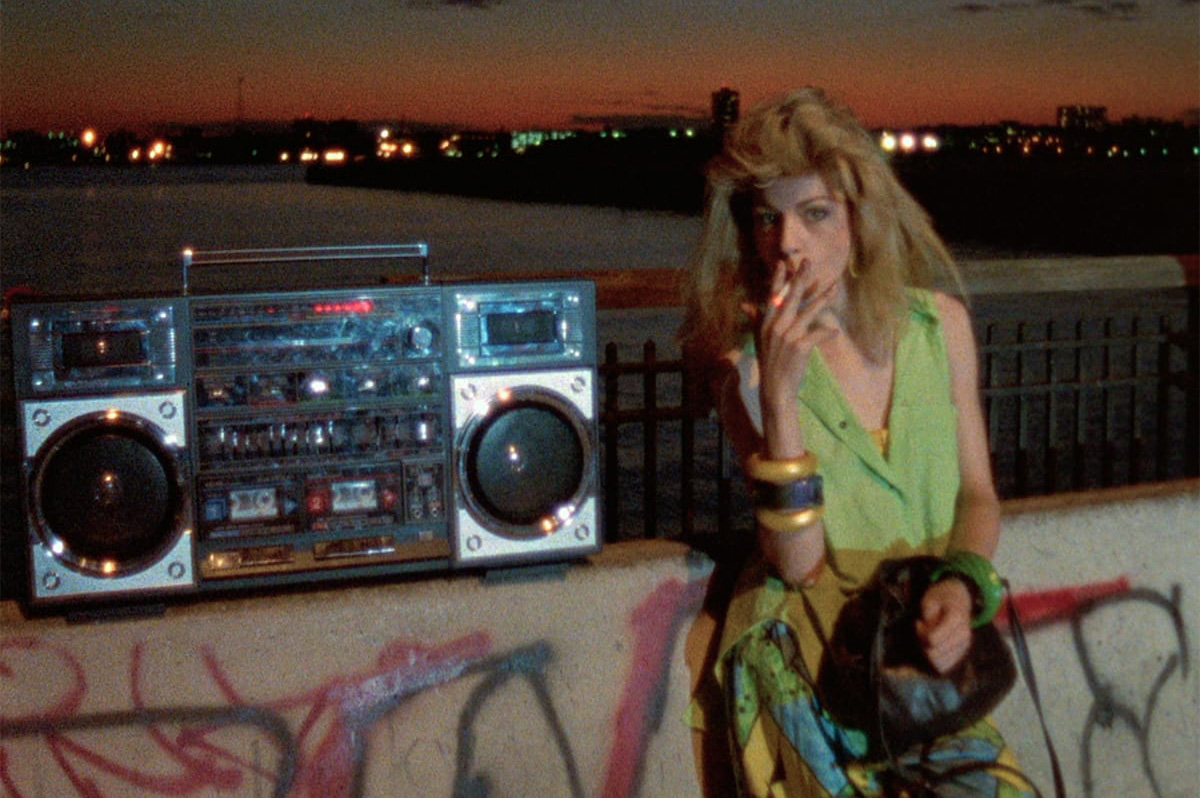
One of the most telling things about queer history is that so much of it has to be gleaned by reading between the lines.
There are the obvious tentpoles: the activism, the politics, the names and accomplishments of key cultural heroes. Without the stories of lived experience behind them, however, these things are mere information; to connect with these facts on a personal level requires relatable everyday detail — and for most of our past, such things could only be discussed in secret.
In recent decades, thanks to increased societal acceptance, there’s been a new sense of academic “legitimacy” bestowed upon the scholarship of queer history, and much has been illuminated that was once kept in the dark. The once-repressed expressions of our queer ancestors now allow us to see our reflections staring back at us through the centuries, and connect us to them in a way that feels personal.
One of the most effective formats for building that connection, naturally enough, is documentary filmmaking — an assertion illustrated by two new docs, each focused on figures whose lives are intertwined with the evolution of modern trans culture.
“I’m Your Venus,” now streaming on Netfllix, bookends an iconic documentary from the past: “Paris is Burning (1990), Jennie Livingston’s seminal portrait of New York City’s ballroom scene of the ‘80s, In that film, a young trans woman named Venus Xtravaganz delivered first-person confessionals for the camera that instantly won the hearts of audiences — only for them to break with the shattering revelation that she had been murdered before the film’s completion.
That 1988 murder was never solved, but Venus — whose surname was Pellagatti before she joined the House of Xtravaganza – was never forgotten; four decades later, her family (or rather, families) want some answers, and filmmaker Kimberly Reed follows her biological siblings — Joe, Louie, and John, Jr. — as they connect with her ballroom clan in an effort to bring closure to her loss; with the help of trans advocates, they succeed in getting her murder case re-opened, and work to achieve a posthumous legal name change to honor her memory and solidify her legacy.
It’s a remarkably kind and unapologetically sentimental chronicle of events, especially considering the brutal circumstances of Venus’ killing — a brutal death by strangling, almost certainly perpetrated by a transphobic “john” who left her body hidden under a mattress in a seedy hotel — and her decision to leave her birth family for a chosen one. As to the latter, there are no hard feelings among her blood relatives, who assert — mostly convincingly — that they always accepted her for who she was; one senses that a lot of inner growth has contributed to the Pallagatti clan’s mission, which admittedly sometimes resembles an attempt at making amends. For the murder itself, it’s best to leave that part of the story unspoiled — though it’s fair to say that any answers which may or may not have been found are overshadowed by the spirit of love, dignity, and determination that underscore the search for them, however performative some of it might occasionally feel. Ultimately, Venus is still the star of the show, her authentic and unvarnished truth remaining eloquent despite the passage of more than 40 years.
Perhaps more layered and certainly more provocative, documentarian Zackary Drucker’s “Enigma” (now streaming on HBO/Max) delves further back into trans history, tracing the parallel lives of two women — trans pioneer and activist April Ashley and self-styled European “disco queen” Amanda Lear — whose paths to fame both began in Paris of the 1950s, where they were friends and performers together at Le Carrousel, a notorious-and-popular drag cabaret that attracted the glitterati of Europe.
Ashley — who died at 86 in 2021 — was a former merchant seaman from Liverpool whose “underground” success as a drag performer funded a successful gender reassignment surgery and led to a career as a fashion model, as well as her elevation-by-wedding into British high society — though the marriage was annulled after she was publicly outed by a friend, despite her husband’s awareness of her trans identity at the time of their marriage. She went on to become a formidable advocate for trans equality — and for environmental organizations like Greenpeace — who would earn an MBE for her efforts, and wrote an autobiography in which she shared candid stories about her experiences and relationships as part of the “exotic” Parisian scene from which she launched her later life.
The other figure profiled by “Enigma” — and possibly the one to which its title most directly refers — is Amanda Lear, who also (“allegedly”) started her rise to fame at Le Carrousel before embarking on a later career that would include fashion modeling, pop stardom, and a long-term friendship with surrealist painter Salvador Dalí. A self-proclaimed “disco queen” whose success in Europe never quite spread to American culture, despite highly public relationships and collaborations with musical icons like David Bowie and Roxy Music, Lear’s trajectory has taken her in a different direction than Ashley’s. In the film’s extensive live interview segments, she repeatedly denies and discredits suggestions of her trans identity, sticking to a long-maintained script in which any and all details of her origins are obscured and denied as a matter of course.
At times, it’s almost amusing to observe her performative (there’s that word again) denials, which occasionally approach a kind of deliberate “camp” absurdity in their adamance, but there’s also a kind of grudging respect that’s inspired by the sheer doggedness with which she insists on controlling the narrative — however misguided it may seem to those of us on the outside. Debate about her gender-at-birth has continued for decades, even predating Ashley’s book, so the movie’s “revelations” are hardly new, nor even particularly controversial — but her insistence on discrediting them provides sharp contrast with the casual candor of Ashley’s elegantly confident persona, underscoring the different responses to transphobia that would direct the separate lives of both these former (alleged) friends.
For what it’s worth, Lear sent an email to the Washington Post, calling the movie “a pathetic piece of trash” and denying not just her trans identity but any friendship or association with Ashley, despite ample photographic and anecdotal evidence to the contrary — and while it might come across as callous or desperate for her to maintain the presumed façade, it’s a powerful testament to the power of cultural bullying to suppress the truth of queer existence; the contrast between the life each of these women chose to live speaks volumes, and makes “Enigma” into one of the most interesting — and truthful — trans documentaries to emerge thus far.
While neither film presents a comprehensive or definitive view of trans experience (is such a thing even possible, really?), both offer a perspective on the past which both honors the truth of queer existence and illustrates the ways in which the stigma imposed by mainstream prejudice can shape our responses to the identity through which the public perceives us.
That makes them both worth your attention, especially when our queer history — and the acknowledgement of trans existence itself — is at risk or being rolled right back up into the closet.
Sports
Trans cyclist’s victory sparks outrage in conservative media
Katheryn Phillips is originally from DC
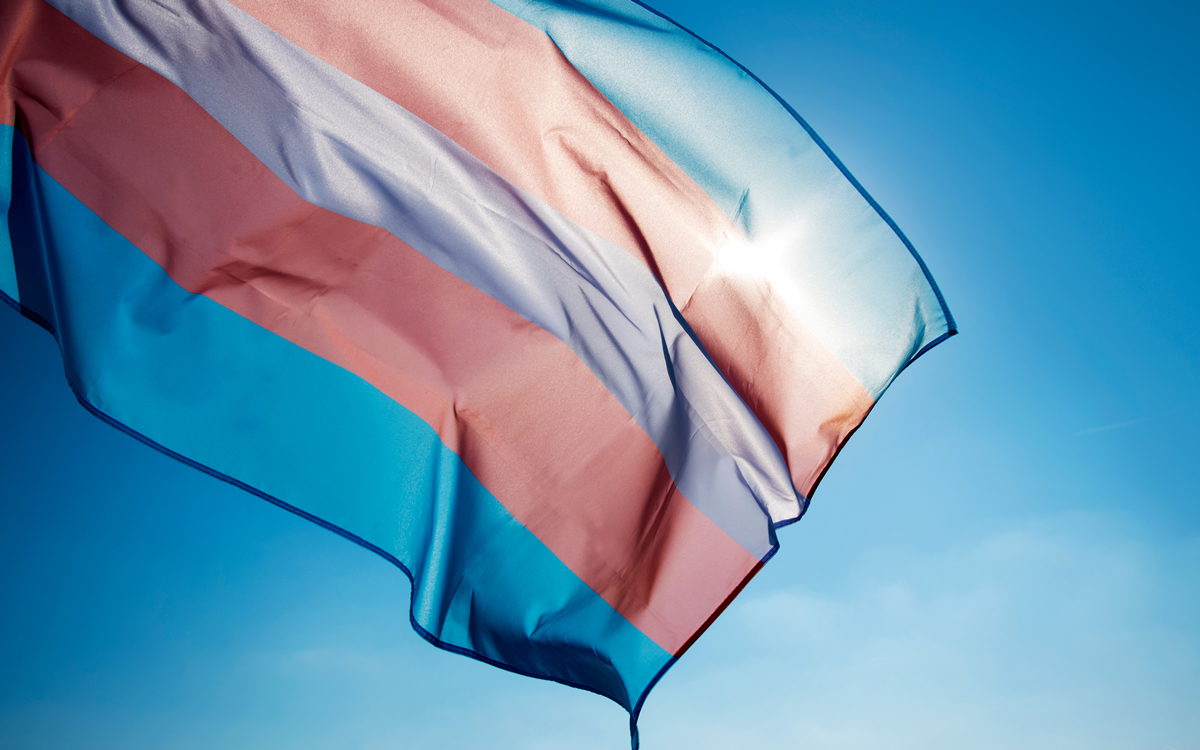
On the heels of UPenn erasing the record of the first openly transgender NCAA Division I All-American swimmer and the U.S. Supreme Court’s decision to tackle bans on trans student-athletes, right wing media is now all hot and bothered about the latest trans woman who won a cycling championship — even though she competed according to the rules.
On Tuesday, 58-year-old Katheryn Phillips finished first in USA Cycling’s Lyons Masters National Championship race for women aged 55-59, with a time of 1:42:10, according to the official results posted by the organization. The record shows her gender as “F” for female.
One second behind Phillips was Julie Peterson, with a time of 1:42:11 — as were three other cyclists: Mary Beth Grier, Andrea Cherniak-Tyson, and Carolyn Maddox.
Peterson, 57, was so outraged, she told Fox News she refused to stand on the podium in second place next to Phillips. Her story was swiftly shared by the New York Post (also owned by Fox’s parent company News Corp.), the Daily Mail, Breitbart, and other conservative media.
Both Peterson and another competitor are accusing USA Cycling of “hiding” that a transgender woman had registered to race.
“It was hidden from us. Katheryn Phillips, KJ’s name, was not on that list. And I checked it up all the way to the point of closure when we couldn’t register online anymore,” Debbie Milne told Fox.
“If I had known, I wouldn’t have spent thousands of dollars in travel and time off work to come and do a race,” Peterson said. Fox welcomed Milne, 56, who finished seventh on Tuesday, to Fox & Friends Thursday morning.
(Video courtesy of Fox News)
Peterson told Fox she did complain to USA Cycling officials prior to the race. Both Milne and Peterson referred to Phillips as a male, and with “he/him” pronouns.
“To be fair to all humans, if we want to say ‘him’ or ‘her,’ he was born a biological male, that is a fact,” Milne said. “And that is the thing that makes it an unfair advantage. Whatever has happened after that is a whole different topic.”
“I said, ‘I don’t want to race against a man,’ and they quickly scolded me and said ‘Oh, you can’t call him a man,’ and I’m like ‘Well, he is a man,’ so I was quickly scolded and corrected that it is a woman and I don’t even know what to say.”
USA Cycling did not respond to the Washington Blade’s emails requesting comment.
Phillips, who goes by Kate and by “KJ,” is a former rugby player with the D.C. Furries, who stated in the comments of a 2024 article published by Zwift Insider that she was the first out trans athlete in the U.S. to compete under the 2004 International Olympic Committee’s guidelines on trans participation.
“When USA Rugby told me about the IOC decision in 2004, I raised my hand to be included. I experience nothing but joy when I play, ride, and race,” Phillips said.
As the Blade has reported, the International Olympic Committee drastically revised those rules in 2021, and in March, Republican lawmakers in D.C. demanded the IOC ban trans female athletes from women’s sporting events altogether.
The Blade also reached out to Phillips for comment but as of press time we have not received a response. She told Zwift Insider in March 2024 she does not let those who disapprove or spread hate impact her performance or her attitude.
“I am unaffected by dissent. I love, I share joy, I am me, and I have been my authentic self for decades,” she said. It’s been reported Phillips came out in 1999, and told Zwift Insider she considers herself a lifelong cyclist.
“I’ve been on a bike for as long as I can remember,” said Phillips. “As kids, my friends and I rode all over town, we were feral kids; no cell phones, no trackers … we just roamed, and nobody got in trouble or hurt bad enough not to ride home … Scrapes/bruises/cuts were not an issue for us. In my teens, I worked for myself as a court/legal messenger, doing all of the work via my bike until I got a car. Raced BMX as a kiddo (when I mowed lawns to cover the race entry fees), I did MTB stuff (non-racing) and Sprint/Olympic Triathlons in my 30’s, and now I’m racing on Zwift, Road/Gravel, and CX in my 50s.”
In the comments section, Phillips made clear she’s not competing to win.
“I don’t do sports for victory, I do it because like many other women, I am an athlete to my core,” she said. “Unlike some, I am not there to WIN, I am there to do my best with the competitors and teammates I have around me trying to do the same…we are in it for the experience. I rejoice in their wins, and a lot of joy is reflected back to me when I have a good day.”
-

 U.S. Supreme Court2 days ago
U.S. Supreme Court2 days agoSupreme Court to consider bans on trans athletes in school sports
-

 Out & About2 days ago
Out & About2 days agoCelebrate the Fourth of July the gay way!
-

 Maryland5 days ago
Maryland5 days agoSilver Spring holds annual Pride In The Plaza
-

 Opinions5 days ago
Opinions5 days agoSupreme Court decision on opt outs for LGBTQ books in classrooms will likely accelerate censorship

